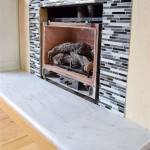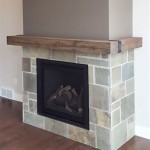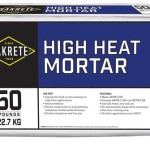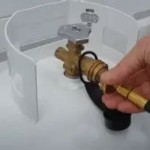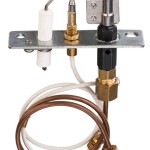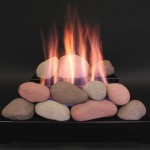How to Put Stacked Stone Over a Brick Fireplace
Updating a brick fireplace with stacked stone can dramatically alter a room's aesthetic, providing a more modern and textured focal point. This project, while achievable for experienced DIY enthusiasts, requires meticulous planning, careful installation, and a good understanding of materials. This article provides a comprehensive guide on how to successfully apply stacked stone over an existing brick fireplace. Accurate planning and execution are critical for a lasting and visually appealing result.
Before commencing any physical work, a thorough assessment of the existing brick fireplace is necessary. This assessment includes inspecting the brick for any signs of damage, such as cracks, loose bricks, or efflorescence (a white, powdery deposit indicating moisture problems). Addressing any pre-existing issues is paramount, as they can compromise the adhesion and longevity of the stacked stone. Furthermore, determining the desired height and width of the stacked stone application is crucial for accurate material estimation.
Preparing the Brick Surface
Proper surface preparation is indispensable for ensuring a strong bond between the brick and the stacked stone. The first step involves thoroughly cleaning the brick surface to remove any dirt, dust, soot, or grease. This can be accomplished using a wire brush and a solution of water and trisodium phosphate (TSP), following the manufacturer’s safety instructions. After cleaning, the surface must be rinsed thoroughly with clean water and allowed to dry completely.
If the brick surface is particularly smooth or sealed, etching it may be necessary to create a more porous surface for better adhesion. This can be achieved using muriatic acid, diluted according to the manufacturer’s instructions and applied with a scrub brush. Extreme caution must be exercised when working with muriatic acid, including wearing appropriate personal protective equipment (PPE) such as gloves, eye protection, and a respirator. After etching, the surface needs to be neutralized with a solution of water and baking soda, rinsed thoroughly, and allowed to dry completely.
Applying a bonding agent is typically recommended to further enhance adhesion. A high-quality concrete bonding agent, specifically designed for masonry surfaces, should be applied according to the manufacturer’s instructions. This usually involves brushing or rolling the agent onto the brick surface and allowing it to dry to a tacky consistency before applying the mortar.
Choosing and Cutting Stacked Stone
Stacked stone is available in a variety of materials, including natural stone, manufactured stone veneer, and cement-based composites. Each material offers different aesthetic qualities, price points, and installation considerations. Natural stone provides a unique and authentic look, while manufactured stone veneer offers a more consistent appearance and lighter weight. Cement-based composites provide durability and weather resistance.
When selecting stacked stone, factors such as color, texture, size, and overall design should be considered to complement the existing room décor. It is also important to choose a stone that is appropriate for indoor use and that is compatible with the chosen mortar. Ordering a sample of the stone is recommended to assess its appearance and workability before making a bulk purchase.
Cutting stacked stone may be necessary to achieve a clean and professional installation, especially around corners, edges, and the fireplace opening. A wet saw with a diamond blade is the most effective tool for cutting stone, providing clean and precise cuts while minimizing dust. When cutting stone, always wear appropriate PPE, including eye protection and a dust mask. If a wet saw is not available, a hammer and chisel can be used, though this method requires more skill and may result in less precise cuts. For complex cuts, professional stone cutting services can be considered.
Installing the Stacked Stone
Mortar is the binding agent that secures the stacked stone to the brick surface. Selecting the appropriate type of mortar is critical for a successful installation. A polymer-modified mortar specifically designed for stone veneer is generally recommended, as it provides enhanced adhesion, flexibility, and water resistance. The mortar should be mixed according to the manufacturer’s instructions, using a drill with a mixing paddle to achieve a smooth and consistent consistency.
Applying the mortar to the back of the stone is the next critical step. Using a notched trowel, spread a generous layer of mortar onto the back of each stone, ensuring that the entire surface is covered. The notches in the trowel help create ridges in the mortar, which provide a better mechanical bond with the brick surface. Press the stone firmly onto the prepared brick surface, wiggling it slightly to ensure good contact. Maintain consistent spacing between the stones, using shims or spacers as needed to achieve a uniform appearance. Excess mortar should be removed immediately with a damp sponge or brush.
Work from the bottom up, starting with a level base course. Use a level to ensure that each course of stone is perfectly horizontal. Stagger the joints between the stones in each course to create a visually appealing and structurally sound pattern. As the installation progresses, periodically step back and assess the overall appearance, making adjustments as needed. Allow the mortar to cure completely according to the manufacturer’s instructions before applying any sealant or grout.
After the mortar has cured, the joints between the stones can be grouted to provide a more finished look and to prevent water penetration. Select a grout color that complements the stone and apply it using a grout bag or a rubber float. Work the grout into the joints, ensuring that they are completely filled. Remove any excess grout from the surface of the stone with a damp sponge, being careful not to smear the stone. Allow the grout to cure completely before applying a sealant.
Applying a sealant to the stacked stone is recommended to protect it from moisture, staining, and fading. A penetrating sealer specifically designed for stone should be used, following the manufacturer’s instructions. The sealant should be applied evenly to the entire surface of the stone, using a brush, roller, or sprayer. Allow the sealant to dry completely before exposing the fireplace to heat or moisture.
Addressing Complex Fireplace Designs
Fireplaces with mantels, hearths, or other architectural features may require additional planning and customization. The stacked stone may need to be cut or shaped to fit around these features, requiring the use of specialized tools and techniques. In some cases, removing and reinstalling the mantel or hearth may be necessary to achieve a seamless and professional appearance.
When installing stacked stone around a fireplace opening, it is important to maintain a safe distance between the stone and the firebox. Consult local building codes and the fireplace manufacturer’s instructions to determine the appropriate clearances. Non-combustible materials, such as metal or fire-resistant gypsum board, may need to be used to protect combustible materials from the heat of the fire.
For complex fireplace designs or for individuals with limited DIY experience, hiring a professional stone mason is recommended. A professional mason has the knowledge, skills, and tools to ensure a safe and aesthetically pleasing installation. They can also provide valuable advice on material selection, design considerations, and maintenance.

Faux Stone Fireplace Surround Over Old Brick Genstone

How To Cover A Brick Fireplace With Stone
Stacked Stone Over Brick Fireplace Ceramic Tile Advice Forums John Bridge
First Timer Looking To Put Stacked Slate Over Brick Fireplace Ceramic Tile Advice Forums John Bridge

How To Diy A Stacked Stone Feature Over Existing Brick

Diy Stacked Stone Fireplaces On A Budget Msi Blog

Fireplace Facelift Using Natural Stone Veneer

Reface A Fireplace With The Look Of Stone Or Brick Barron Designs

Installing Stone Veneer Over A Brick Fireplace Grand River

Transform Your Home Stone Veneer Over Brick Fireplace Guide

